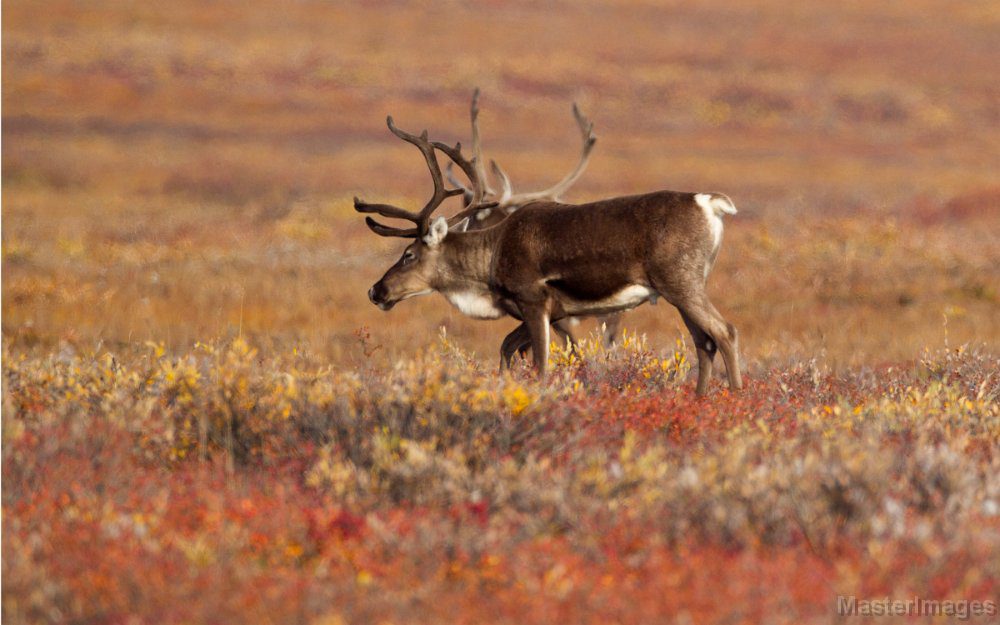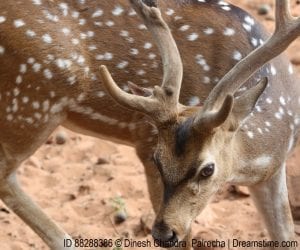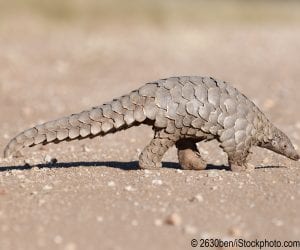By definition, a habitat provides all the resources an organism needs to survive. So it should come as no surprise that habitat loss is the primary cause of species extinction (and therefore the greatest threat to biodiversity) worldwide. In September 2021, the U.S. Fish and Wildlife Service declared 23 additional species extinct, noting habitat destruction as one of the two main drivers. And as is the pattern with most environmental crises of our time, humans are the primary culprit.
With today’s species extinction rate thousands of times greater than the natural base level, it is important to examine the causes of habitat loss in order to reduce the damage.
This post explores six ways that humans are causing widespread habitat destruction.
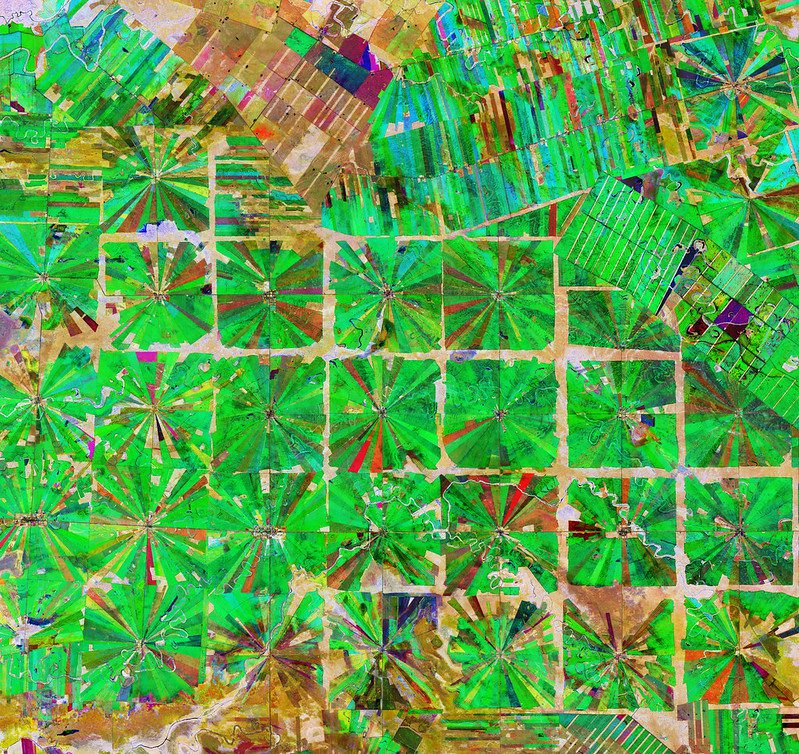
Satellite image of land where tropical forest was cleared for agriculture.
1. Agriculture will convert 1.3 million square miles of habitat to farmland by 2050
Our food system is a major driver of habitat and biodiversity loss. The overgrazing and intensive pesticide use associated with industrial farming leads to land degradation, soil erosion and soil contamination. And the process of clearing plots for crops and livestock puts a strain on the land and on its native plant and animal populations. Between 2001 and 2015, cattle pasture alone replaced forest area the size of Sweden. This problem is especially pointed in the Amazon where tropical rainforests host a rich diversity of wildlife. Cattle ranching accounts for 80% of deforestation in the region, and by 2030, 27% of the Amazon biome could be without trees.
With global population growing and demand for food increasing, an expected 1.3 million square miles of habitat will be converted to farmland by 2050. So the need for better farming practices is abundantly clear. Regenerative agriculture and traditional practices found in Indigenous communities can be important for restoring biodiversity and offsetting effects of land degradation. This along with efforts to move away from meat-focused diets represents a more sustainable path forward.
2. Logging is a source of great harm for forest ecosystems
Harvesting timber is another primary driver of global forest loss. Because of demand for wood and paper products, approximately 30% of the world’s tree species are facing the possibility of extinction. Selective logging entails removing highly valued trees, and clearcut logging knocks down entire forests. Both of these practices destroy habitats, as even the removal of one tree creates residual damage for dozens of trees left behind.
Logging’s damage to the forest environment is extensive. Trees naturally absorb water and provide nutrients to soil, so when they’re cut down, soil erodes. Decreases in tree cover also alter levels of light penetration, creating new ecological conditions which cannot support the same variety of species. The roads built for logging change sediment patterns in streams. And removing trees that would naturally fall into streams destroys thermal cover and degrades aquatic ecosystems. Lessening such harm calls for balance between the demands of the logging industry and the need to preserve forest health.
3. Extracting oil and gas through fracking is a major threat to biodiversity
It’s well documented that fracking, the widely used method of extracting oil and gas, wreaks havoc on the surrounding environment. Contaminants pollute the air and water, resulting in large-scale habitat degradation. And drilling infrastructure industrializes rural areas, fragmenting habitats and disrupting wildlife in the process. When the construction and maintenance of pipelines and access roads destroys the continuity of existing habitats, edge habitat increases. This is problematic for species that prefer the interior of a forest and aren’t equipped to survive in higher soil temperatures, increased wind, and increased sunlight. On the other hand, organisms that thrive in edge habitats, like invasive plant species, can take over and throw an ecosystem off-balance.
In Alberta, Canada, oil and gas well site development continues to interfere with local wildlife in a major way. In recent decades, habitat fragmentation from fracking altered the hunting patterns of wolves, providing them greater access to caribou. This increase in predation has since contributed to the decimation of the caribou population. And as is often the case with habitat destruction, the task of repairing the damage and restoring the caribou population is proving to be a challenge.
4. Trawling causes terrible physical damage to ocean habitats
Trawling is a fishing technique that involves dragging massive, heavy nets along the seafloor. (Think of an underwater bulldozer the size of several football fields.) Most of the fish that humans consume come from the ocean’s continental shelves. It’s in these habitats, which are brimming with wildlife, that these destructive trawling nets are put to use.
Trawling displaces seabed sediment and dredges up ancient rocks. It disrupts habitat structure and destroys flora and fauna, and its effects ripple throughout the ecosystem. Coral are home to a variety of organisms, and when trawling destroys that habitat, prey species are depleted and larger fish like sharks suffer. Ocean habitats vary across the globe, so making these dangerous fishing methods more sustainable may require a localized approach.
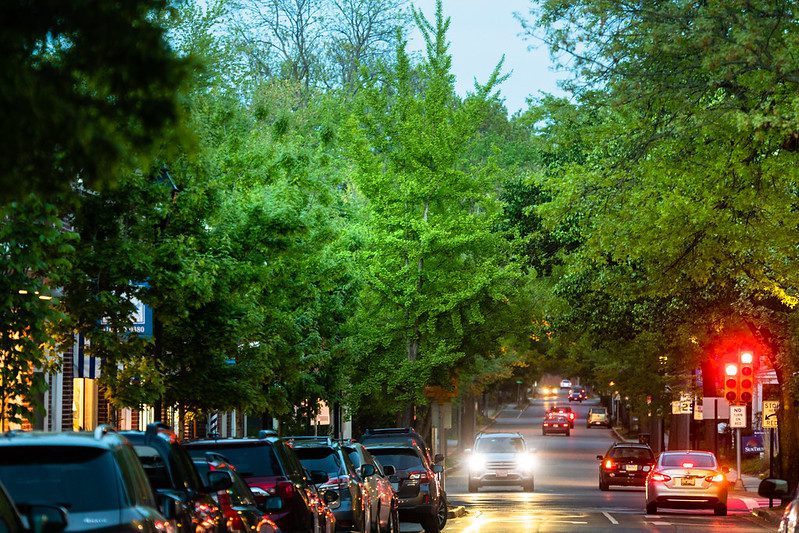
5. Urbanization and urban sprawl are major drivers of habitat loss worldwide
In today’s era of rapid urban expansion, cities and outlying suburbs are demanding an unprecedented amount of land and resources, and are encroaching on biodiversity hotspots and protected areas. Construction of city infrastructure creates the usual pattern of habitat destruction and fragmentation, and residential development outside cities stretches the ecological footprint of urban areas. Watershed urbanization impacts aquatic environments, creating more flooding, channel erosion and aquatic habitat destruction. And as a whole, cities often create high levels of pollution that contaminate wildlife habitat.
While research has focused more on its direct effects, the indirect effects of urban growth on biodiversity are even larger. Worldwide, the agricultural land needed to support the food demand of cities is 36 times greater than the land occupied by the cities themselves. Strategies for incorporating green infrastructure like creating urban tree canopies and protecting floodplains can make cities eco-friendlier. But ultimately, the massive challenges surrounding urban growth and habitat loss require extensive and varied solutions.
6. Natural disasters create a whirlwind of consequences for wildlife
There are also non-human drivers of habitat destruction, including natural disasters. A full display of nature’s force, volcanic eruptions, earthquakes, floods, and tornadoes can cause significant habitat destruction. Magma and ash from volcanic activity is known to destroy coral habitats and transform ecosystems. And tornadoes can tear up wildlife habitat and create conditions for invasive plants to thrive. The 2008 Sichuan earthquake that destroyed 23 percent of giant pandas’ habitat exemplifies how such disasters are particularly harmful to biodiversity. But as time passes, habitats often recover from these natural occurrences.
And while many natural disasters aren’t caused by humans, per se, human activity is increasing their intensity and frequency. As anthropogenic greenhouse gas emissions exacerbate climate change, increases in severe heat and drought cause disasters like wildfires. And deforestation for agriculture often disrupts the water cycle and causes extensive flooding. This piling on of events that are naturally destructive gives ecosystems less space to regenerate, and this is great cause for concern.
Reversing the Damage of Habitat Destruction
As the world becomes increasingly aware of the extent of habitat destruction and the danger associated with it, there is increased urgency in efforts to reverse the damage.
Soil health plays a crucial role in the health of forest ecosystems. Therefore, many reforestation projects aim to rebuild habitat from the ground up. In the Amazon, farmers use agroforestry techniques to revitalize degraded soil and to grow crops in ways that strengthen, rather than destroy, forest environments.
In Guyana’s Rupununi region, the focus is on habitat preservation. The extensive connectivity between savanna, wetland and forest habitats there helps to maintain rich levels of biodiversity. Working with local Indigenous communities, conservation ecologists seek to protect the balance of life among the complex ecosystems in the region.
Ultimately, the central role that humans play in habitat destruction suggests that humans will also need to play a huge role in reversing the damage. The causes of habitat loss are vast, complex, and interconnected. But this means that there are many opportunities to work towards solutions.
Image credits: Satellite deforestation (Deforestation in Bolivia by European Space Agency is licensed under CC BY-SA 2.0); Caribou (Porcupine Caribou (Rangifer tarandus granti) by Larry Master); Tree canopy (Urban tree canopy in Talbot County, Md. by Will Parson/Chesapeake Bay Program is licensed under CC BY-NC 2.0)



